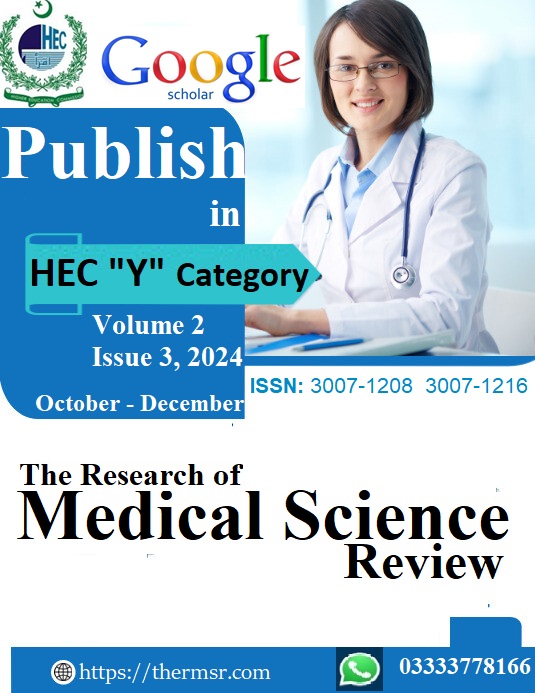DIAGNOSTIC ACCURACY OF NATIONAL EARLY WARNING SCORE (NEWS) IN PREDICTING MORTALITY IN PATIENTS WITH SEPSIS
Keywords:
Sepsis, Mortality, Risk Assessment, National Early Warning Score (NEWS), Diagnostic Accuracy, Prognostic ToolsAbstract
BACKGROUND: The National Early Warning Score (NEWS) is a widely used tool designed to assess clinical deterioration, but its role in predicting mortality specifically in sepsis patients requires further validation. Assessing the diagnostic accuracy of NEWS in this context could provide critical insights into its utility for early risk stratification and clinical decision-making.
OBJECTIVE: To find diagnostic accuracy of national early warning score in predicting mortality in patients with sepsis
MATERIALS AND METHODS
Study design: Cross sectional study.
Setting: Department of Surgery Unit –II, services hospital Lahore
Duration: The study was completed in 6 months after approval of synopsis [May 28, 2024 till Nov 28, 2024]
Data collection procedure: Study was started after getting approval form hospital ethical committee, and 165 patients were enrolled in the study by meeting inclusion criteria. NEWS score was calculated myself and all patients were managed as per hospital protocol. Patients with a NEWS≥ 5 they were considered for high acuity area and enrolled in the sepsis management protocol standard guidelines. Patient’s status was monitored and mortality was noted as per operational definition.
RESULTS: The average age of the study participants is 59.04 years, with a standard deviation of 15.94 years. There were 103 (62.4%) males and 62 (37.6%) females. Out of 40 individuals who died, 37 had a NEWS score of ≥5, and 3 had a NEWS score of less than 5. Among the 125 individuals who survived, 12 had a NEWS score of ≥5, and 113 had a NEWS score of less than Sensitivity, specificity, PPV, NPV, and overall accuracy of NEW score (≥5) were found as 92.5%, 90.4%, 75.5%, 97.4%, and 90.9%, respectively.
CONCLUSION: The findings highlight that the National Early Warning Score (NEWS) is a reliable tool for predicting mortality in patients with sepsis. The score effectively identifies most mortality cases while accurately ruling out those at lower risk. Its performance supports its use as a practical and efficient method for early risk stratification in clinical settings, enabling timely interventions for patients at high risk of adverse outcomes.
Downloads
Downloads
Published
Issue
Section
License

This work is licensed under a Creative Commons Attribution-NonCommercial-NoDerivatives 4.0 International License.














